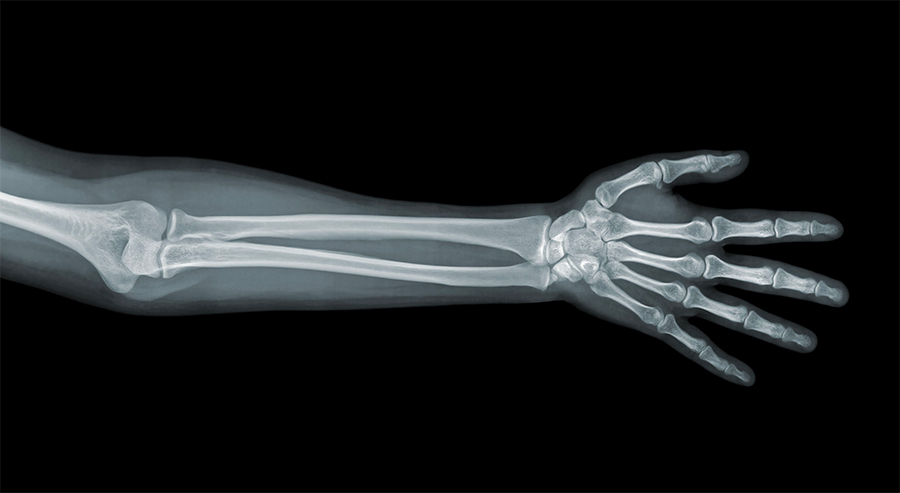- While behavior does not directly fossilize, paleoanthropologists are able to figure out how our extinct ancestors may have behaved by using the comparative method, biomechanical modeling, and empirical evidence such as trace fossils.
- Using comparative methods, we can hypothesize about behaviors such as social behavior, locomotion, and diet.
Highlights
There is a lot that can be determined about extinct species by looking directly at the fossil bones. The leg bones of a hominin can reconstruct how tall the species was. How worn down the teeth are, the stage of growth of the bones, and other age-related changes can approximate how old an individual was when they died. But how can we figure out how an ancient species may have behaved?
Behavior—the ways in which an organism acts—does not directly fossilize. But we can make inferences using a few different tools: the comparative method, biomechanical modeling, and empirical evidence.
Using fossils to understand behavior
Georges Cuvier (1769–1832) founded the field of comparative anatomy, through which we can compare fossils with living animals. Cuvier realized that form, or shape, reflected function. On a bone, there are different marks and bumps where muscles attach. The ends of a long bone such as the humerus, a bone in the upper arm, can show how much that joint could rotate and bend. Scientists can look at the form of a fossil—with its muscle attachments and range of motion—and compare it to living animals to find the closest match.

X-ray of a human arm bone. Image credit Shutterstock
Using the comparative method, the locomotion of our ancestors can be reconstructed. Examining fossil teeth can be compared to the teeth of living animals to reconstruct the diet of fossil species.
Using computer programs, researchers can also use what they know about the shape, muscle attachments, and joints of fossils to create biomechanical models that show how an extinct animal may have moved. Computer models can reconstruct how a T. rex may have walked, how a fossil primate may have swung from branch to branch in the trees, or how “Lucy,” one of our hominin ancestors, may have chewed food.
Sometimes scientists don’t find fossilized bones, they find trace fossils instead. Trace fossils are not bones or the remains that an animal left behind, but preserved signs of activity made by an animal—footprints, burrows, nests, or even coprolites—which are fossilized feces. One of the most famous examples of trace fossils in paleoanthropology are the Laetoli footprints. They were found in 1976 in Tanzania by Mary Leakey and her team. The footprints are 3.6 to 3.8 million years old and were most likely made by members of Lucy’s species, Australopithecus afarensis, and can show how Lucy’s species may have walked around. Today, there are multiple sets of footprints that have been found and studied.

Illustration of Lucy's species, A. afarensis, walking across fresh volcanic ash that hardened into fossil footprints.
Image courtesy ASU Institute of Human Origins
Social behavior
While scientists can reconstruct locomotion and diet in fossil species, some behaviors are harder to figure out. Social behavior, or the interactions between members of the same species, is harder to infer. Examples of social behavior would be the social structures of various forms of primates: orangutans, which mainly are solitary primates; gibbons, which are pair-bonded, meaning they are a couple consisting of a single male and a single female; and hamadryas baboons, which are polygynous, living in a group with a single adult male and multiple adult females. Humans today display a variety of social structures across different cultures.

Orangutan, pair-bonded gibbons, and baboon group.
Image credit orangutan and gibbons (Shutterstock), baboons (Joan Silk)
How is the social behavior of our ancestors determined? Using the comparative method and sexual dimorphism—the difference in size and appearance between females and males—researchers can hypothesize what the social pattern of some of our hominin ancestors may have been.
Canine honing complex
Chimpanzee’s teeth have big canines—the sharp, pointed teeth in between the incisors and premolars—and male chimps have bigger canine teeth than females. Their canines are sexually dimorphic; they differ in size between males and females. They sharpen their upper canines against their lower premolars when they open and close their mouths. This self-sharpening system is the canine honing complex. But humans do not have big canines, we do not sharpen our canines, and males and females have similarly sized canines too.
The canines of one of our hominin ancestors, Sahelanthropus tchadensis, a hominin species that lived 7.2 to 6.8 million years ago, had smaller canine teeth. Ardipithecus kadabba, a hominin species that lived 5.8 to 5.2 million years ago, had canine teeth that were even smaller still, although may have still had some honing. Ardipithecus kadabba’s younger relative, Ardipithecus ramidus, had small canine teeth and little sexual dimorphism between males and females.

Chimpanzees show large canine teeth (left), but by around 6 to 7 million years ago, earliest hominins had smaller canine teeth (middle image of Sahelanthropus tchadensis), and Ardipithecus kadabba (5.8 to 5.2 million years ago) had even smaller canine teeth.
Image credits Chimpanzee (Shutterstock), Sahelanthropus tchadensis (Didier Descouens- CC https://commons.wikimedia.org/w/index.php?curid=10709964), Ardipithecus kadabba (Yohannes Haile-Selassie)
By looking at the fossils of these species, researchers can follow the process of losing the canine honing complex along our lineage. But what does it mean to lose the canine honing complex and have smaller canines? Through studying living primates today, scientists have learned that big canines are used to threaten others and occasionally as weapons. Human ancestors lost the ability to do this when they lost their big canines. This may suggest their social pattern was not similar to that seen in chimpanzees, which live in multimale, multifemale groups. The shrinking canine teeth and loss of the canine honing complex through our lineage may have indicated less male-male fighting.
Written by Amanda Slotter